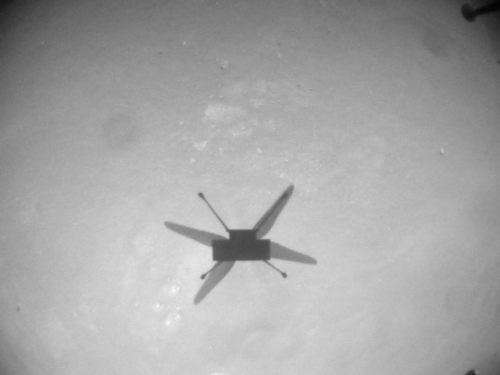British startup rocket company wants to recover only satellite launched by UK
Capitalism in space: Skyrora, a British startup rocket company which is attempting to build the first rocket using hypersonic technology, has now issued a challenge to the commercial space industry to come up with a plan to snatch from orbit the only satellite ever launched by a rocket built by the United Kingdom and bring it back safely to Earth.
Edinburgh-based rocket company Skyrora is issuing a challenge to find a way to retrieve the Prospero satellite. The object was the first and only UK spacecraft to be launched on a British rocket, from Australia in 1971. It’s defunct now, obviously, but is still circling the globe on an elliptical orbit some 1,000km up.
Skyrora, who will soon start sending up rockets from Scotland, regards the satellite as an important piece of UK space heritage. The company has already recovered part of the Black Arrow vehicle that placed Prospero in orbit. This fell back to Australia in the course of the mission where it languished for decades in the Outback until the firm had it shipped home and put on display.
Now, Skyrora is looking for ideas as to how best to approach and grab hold of the 66kg satellite, whose original mission was to investigate the space environment.
After that single successful launch of Black Arrow, the British government decided to abandon it, and in fact for the next half century refused to invest any money in space, at all. While the decision was probably economically wise for the government, it also did not do anything to encourage a private space industry, and for the next half century there was none in the UK. This is now finally changing, but fortunately not as a government space program like Black Arrow but as a competitive private launch industry aimed at profit.
Recovering Prospero would be a nice public relations stunt that might help further encourage that private industry.
Capitalism in space: Skyrora, a British startup rocket company which is attempting to build the first rocket using hypersonic technology, has now issued a challenge to the commercial space industry to come up with a plan to snatch from orbit the only satellite ever launched by a rocket built by the United Kingdom and bring it back safely to Earth.
Edinburgh-based rocket company Skyrora is issuing a challenge to find a way to retrieve the Prospero satellite. The object was the first and only UK spacecraft to be launched on a British rocket, from Australia in 1971. It’s defunct now, obviously, but is still circling the globe on an elliptical orbit some 1,000km up.
Skyrora, who will soon start sending up rockets from Scotland, regards the satellite as an important piece of UK space heritage. The company has already recovered part of the Black Arrow vehicle that placed Prospero in orbit. This fell back to Australia in the course of the mission where it languished for decades in the Outback until the firm had it shipped home and put on display.
Now, Skyrora is looking for ideas as to how best to approach and grab hold of the 66kg satellite, whose original mission was to investigate the space environment.
After that single successful launch of Black Arrow, the British government decided to abandon it, and in fact for the next half century refused to invest any money in space, at all. While the decision was probably economically wise for the government, it also did not do anything to encourage a private space industry, and for the next half century there was none in the UK. This is now finally changing, but fortunately not as a government space program like Black Arrow but as a competitive private launch industry aimed at profit.
Recovering Prospero would be a nice public relations stunt that might help further encourage that private industry.












